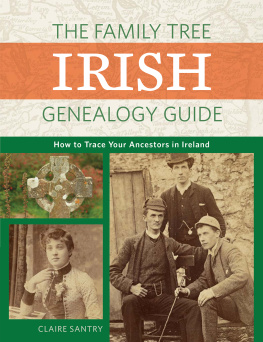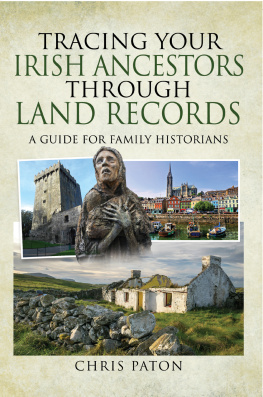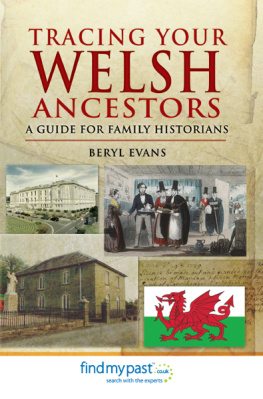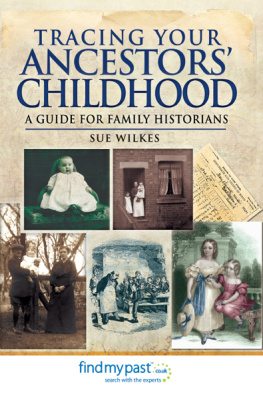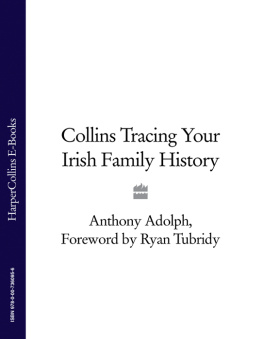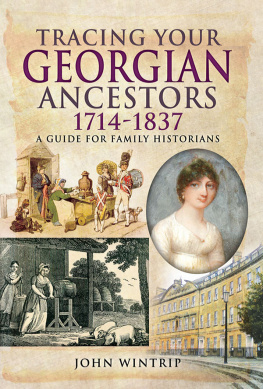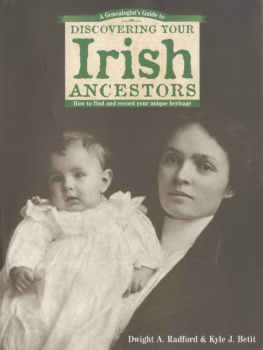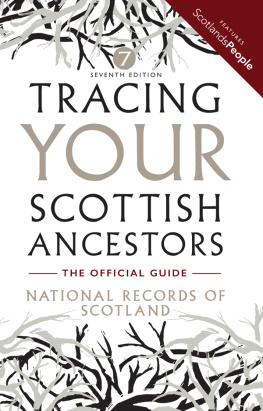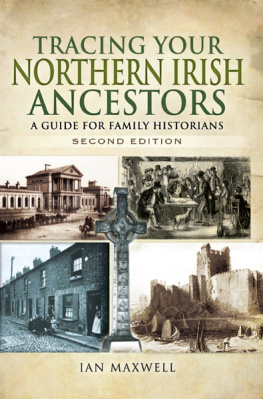
PREFACE TO THE FOURTH EDITION
Tracing Your Irish Ancestors was first published in 1992, at a time when genealogy in Ireland was barely respectable. The change has been extraordinary. Family history now figures on the agendas of Government departments in a way that was scarcely imaginable then. All Irish record-holding institutionslocal and national archives, libraries and private institutionshave now recognised that genealogists are one of their largest constituencies, and they are providing dedicated research rooms, personalised consultations, expanded finding aids and, above all, digitised records. Computerising records not only improves speed and removes drudgery but can qualitatively alter the kinds of information that become available and can increase by orders of magnitude the number of people who can access it. Such websites as the National Archives census site, , the Library Councils Griffiths Valuation site, , the church records sites, and , and the newspapers archives at and are slowly but surely changing the everyday relationship that people in Ireland, and people of Irish heritage outside the island, have with their familys past, and by extension with their countrys past. This can only be a good thing.
This edition reflects the profound change in the connection between Irish research and the internet that has taken place since 2005. Then, any online copies of records were piecemeal and amateurvery welcome, but afterthoughts to the main business of hands-on research in Irish repositories. Now the internet is at the heart of any Irish family history research project, and the entire edition has been rewritten to incorporate that change. Where online transcripts exist, these are listed alongside the descriptions of the original records, and research strategies are supplied for any major dedicated websites.
The reference section has also been greatly enlarged. As before, any material removed for reasons of space will be found at the Irish Ancestors website, .
INTRODUCTION
The aim of this book is to provide a comprehensive guide for anyone wanting to trace his or her Irish ancestors. As the individual circumstances of each family are unique, the relevant areas of research vary widely from case to case. While some areas will be important for almost all researchers, others are more specialised and are therefore extremely important only in particular cases. This book is structured to reflect that division: the first five chapters examine the basic sources and the internet; the following seven chapters detail sources with a narrower application; and the final three chapters consist of a number of reference guides to facilitate quick access to a range of research materials, including county-by-county source lists and Roman Catholic records.
How you use the book depends very much on your individual circumstances. For someone with no experience of genealogical research in Ireland it would be best to start from this Introduction and work through the early chapters, leaving the rest until the basic materials have been exhausted. Someone who has already covered parish registers, land records, census returns and the state records of births, marriages and deaths may wish to start from Chapter 5. Others may simply want to use the reference guides as a basis for planning and directing their research. However, as anyone who regularly uses Irish records will know, one of the pleasures of research is the constant discovery of new sources of information, and new aspects of familiar sources. The information in this book is the result of many years of such discoveries in the course of full-time research, and it is quite possible that even a hard-bitten veteran will find something new in the account of the basic records given in the early chapters.
WHERE TO START
The first question asked by anyone embarking on ancestral research is What do I need to know before I start? Unfortunately, there are as many answers as there are families. Although the painstaking examination of original documents has its own pleasures, in genealogy it is usually better to arrive than to travel hopefully. So, while it is theoretically possible to start from your own birth and work back through records of births, marriages and deaths, parish records and census records, in practical terms the more you can glean from older family members or from family documents the better: there is no point in combing through decades of parish records to uncover your great-grandmothers maiden name if you could find the answer simply by asking Aunt Agatha. Nor does the information you initially acquire this way need to be absolutely precise. At this point in your research, quantity is more important than quality. Later on, something that seemed relatively insignificantthe name of a local parish priest, the story of a contested will, someones unusual occupation, even a postmarkmay well prove to be the vital clue that enables you to trace the family further back. In any case, whether or not such information eventually turns out to be useful, it will certainly be of interest and will help to flesh out the picture of earlier generations. For most people the spur to starting research is curiosity about their own family, and the kind of anecdotal information provided by the family itself rarely emerges from the official documents.
To use the record resources fully and successfully, three strands of information are vital: dates, names and places. Dates of emigration, births, marriages and deaths; names of parents, siblings, cousins, aunts, in-laws; addresses, townland names, parishes, towns, counties... Needless to say, not all of this is essential, and again absolute accuracy is not vital to start out with. A general location and siblings names can be used to uncover parents names and addresses, and their parents names. A single precise name and date can be enough to unlock all the other records. Even a name alone, if it is sufficiently unusual, can sometimes be enough. In general, though, the most useful single piece of information is the precise locality of origin of the family. The county of origin would normally be the minimum information necessary, though in the case of a common surname (of which there are only too many) even this may not be enough. For the descendants of Irish emigrants the locality is often one of the most difficult things to discover. There are a variety of ways of doing this, however, both in the records of the destination country and in Irish records online. The best time to do it is certainly before coming to Ireland. A guide to staring research online will be found below, and the most useful Australian, American and British sources for uncovering the locality of origin of Irish emigrants are detailed at the end of this Introduction.
The only absolute rule in family history research is that you should start from what you know, and use that to find out more. Every familys circumstances are unique, and where your research leads you will depend very much on the point from which you start. So, for example, knowing where a family lived at about the turn of the century will allow you to uncover a census return with the ages of the individuals, leading to birth or baptismal records giving parents names and residence, leading on in turn to early land records, which may permit the identification of generations before the start of parish records. At each stage of such research the next step should always be determined by what you have just found out: each discovery is a stepping-stone to the next. As a result, it is simply not possible to lay down a route that will serve every reader. It is possible, however, to say that there is no point in taking, say, a seventeenth-century pedigree and trying to extend it forwards to connect with your family. Although there may very well be a connection, the only way to prove it is by expanding your own family information and then working backwards.
Next page

